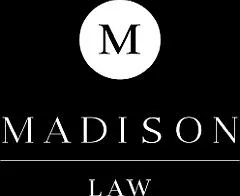- within Real Estate and Construction topic(s)
- with readers working within the Property and Law Firm industries
- within Real Estate and Construction, Litigation and Mediation & Arbitration topic(s)
Understanding AB 2801: Security Deposit Photos in California
The requirements to keep a tenant's security deposit have been strict and have gotten stricter, as the documentation required has gotten more detailed and now require photographic evidence of the damages. Landlords seeking to maintain a security deposit for their properties must take photographs both: (1) immediately before the tenant moves in; and again (2) a reasonable period of time after the tenant moves out. These photographs are required, and are used to document the existence of damages caused by the tenant which may justify applying portions of the security deposit toward repairs (i.e., if challenged, being able to visibly show a judge that this is how it looked before the tenant moved in, and this is what it looks like now).
New Requirements Start in 2025
The effective dates for this statute are slightly more nuanced than usual, and many sources already commonly conflate bills with statutes, as well as passage dates with effective dates. To clarify, California enacted Assembly Bill 2801 in 2023, which amended Cal. Civil Code § 1950.5—the statute that now includes the photograph documentation requirement. Subsection ‘(s)' of that statute provides that the amended provisions generally become effective on July 1, 2024. However, the photograph requirements have different effective dates.
- April 1, 2025: Landlords are required to take photographs of the property's condition at the conclusion of the tenancy.
- July 1, 2025: Landlords are required to take photographs of the property's condition immediately before the tenancy.
The Statue Requires Photos, the Details Are Slightly Vague
What is it that the new law requires landlords to do regarding photographs? In short, the landlord must:
- Take photographs “of the unit immediately before, or at the inception of, the tenancy” [§ 1950.5(g)(1)].
- Take photographs of the unit after the tenancy, “within a reasonable time after the possession of the unit is returned to the landlord, but prior to any repairs or cleanings for which the landlord will make a deduction from or claim against the security deposit pursuant to this section” [§ 1950.5(g)(2)].
- Take photographs of the unit again “within a reasonable time” after the repairs are concluded [§ 1950.5(g)(2)].
- Provide such photographs to the tenant along with the written documentation of the charges against the security deposit [§ 1950.5(h)(2)(D)].
These requirements are in addition to the pre-existing requirements for documenting charges and repairs.
As it stands, the requirements are not particularly detailed, and the law is new enough that specific guidance for compliance is partly speculation. However, a landlord may be better served by taking sufficient photographs, which are clear and feature areas of the property that may be most subject to damage. For example, taking a photograph “of the unit” might, in common language, be complied with by taking a single photograph of each room of the property. But what if the damage occurs on a wall that is not visible in the photograph? This approach could fail if damage later appears on a wall or surface that was not visible in the original images. If photos are blurry, poorly framed, or don't adequately capture the damaged location, they may not be persuasive or admissible as evidence. Landlords must also consider how these images will be stored, referenced, or retrieved in the event of a dispute. If a photograph is taken of a close-up section of a wall before a tenant moves in, how will anyone know which wall was photographed when that tenant moves out, potentially years later?
Practical Tips for Landlords
Until the courts provide concrete guidance on how these requirements will be interpreted and enforced, landlords should consider adopting the following pragmatic practices (which may or may not be sufficient under the law, but are worth considering), including:
- Photographing Each Room Individually: Take separate photographs of each room, and save all photographs from that room in a separate folder, with a date stamp for the date the photograph was taken.
- Capturing Key Features Thoroughly: Take a sufficient quantity of photographs to accurately document the significant features in each room, potentially including the condition of each wall, the flooring, doors, and appliances.
- Using Redundant Storage Systems: Maintain the photographs in multiple locations, including on a computer, flash drive, and/or cloud-based file system, to ensure they are not lost or destroyed by time or disaster.
- Recording a Video Walkthrough: Take a video walkthrough of the property in addition to the still photographs.
Final Note
California law is among the most tenant-protective in the country. A landlord, or prospective landlord, should carefully review the requirements of California law and may want to consult with an attorney or qualified real estate professional before leasing property in California.
The content of this article is intended to provide a general guide to the subject matter. Specialist advice should be sought about your specific circumstances.


